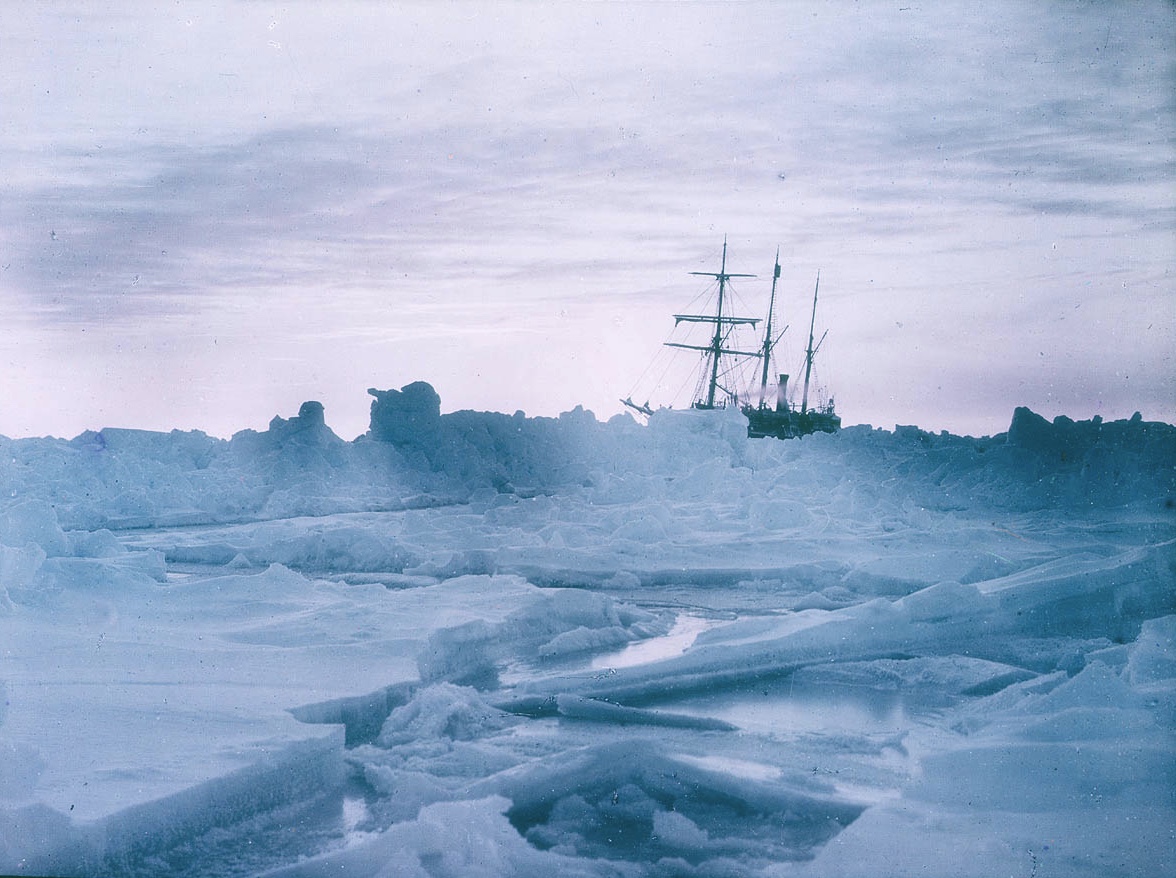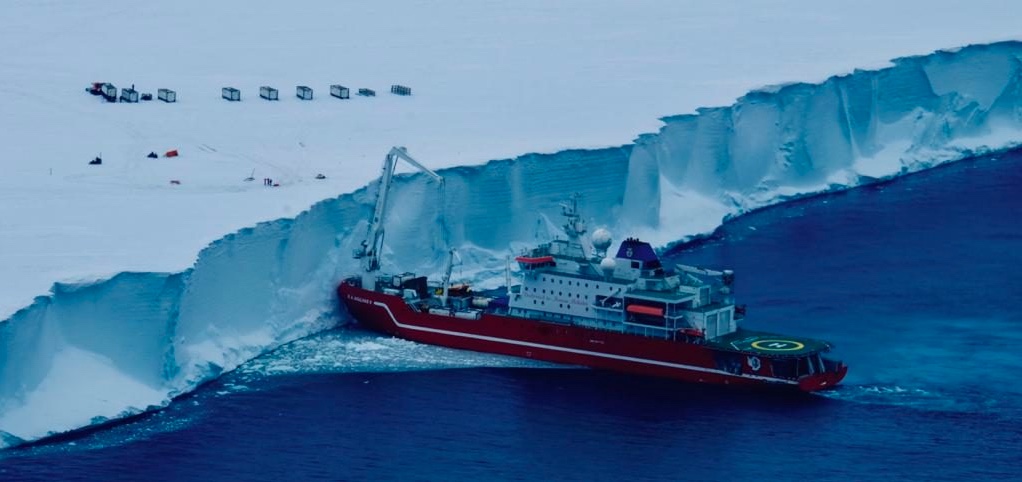Shackleton's Lost Ship May Lie at the Bottom of Antarctica's Weddell Sea

Expedition scientists on board a vessel in Antarctica have embarked on the last stage of their voyage — the search for the wreck of the steam-yacht Endurance, which was abandoned by the British polar explorer Ernest Shackleton in 1915 when it was crushed by sea ice.
They are just a few days away from the spot where the shipwreck is thought to lie at the bottom of Antarctica's Weddell Sea. [In Photos: Searching for Shackleton's 'Endurance' Shipwreck]
The expedition members, on board the Dutch research vessel Agulhas II, recently completed their scientific tasks on the voyage by surveying the storied Larsen C ice shelf alongside the Antarctic Peninsula and the gigantic A-68 iceberg that separated from it on July 12, 2017 — when what started as an enormous crack in Larsen C culminated in the separation of a Delaware-size, trillion-ton iceberg drifting through the Weddell Sea.
Now, the Agulhas II is making its way through heavy sea ice to the last known location of the Endurance, which the members of Shackleton's expedition carefully recorded using astronomical sightings.
British maritime archaeologist Mensun Bound, who heads the expedition's exploration phase, said the team is hopeful about finding the historic shipwreck — about 75 miles (120 kilometers) from their ship's present location — thanks to a break in the weather.
"Although the odds of success were initially against us, the mood within the team is upbeat given the favorable ice and weather conditions, which we think will allow us to reach the search area,' Bound said in a statement.
Antarctic survival
Shackleton led the expedition in 1914 in the hopes of crossing Antarctica, but the ship became trapped in the ice in February 1915. The expedition members stayed with the ship until it was crushed by the ice and sank that November.
Get the world’s most fascinating discoveries delivered straight to your inbox.
Shackleton and the 27 expedition members then spent several months trekking across the sea ice and floating on ice floes, until they finally escaped in the ship's lifeboats, which they had recovered from the wreck, to Elephant Island, near the northern tip of the Antarctic Peninsula. [Icy Images: Antarctica Will Amaze You in Incredible Aerial Views]
Most of the crew sheltered there, surviving on seal meat, while Shackleton and five others navigated in a small lifeboat for 800 miles (1,280 km) to a whaling station on the subpolar island of South Georgia, arriving in May 1916.
Shackleton then made four attempts to rescue the remaining crew at Elephant Island. At the end of August 1916, he succeeded in doing so in a Chilean steam tug. Shackleton and all 27 members of the expedition survived the ordeal.
Shipwreck under ice
The researchers on board the Agulhas II hope to deploy an autonomous underwater vehicle (AUV) to search the seafloor for the shipwreck.
It is not known if the wreck is currently covered by a layer of sea ice or not, but the researchers hope the AUV and the detailed records left by Shackleton's expedition will help them locate the historic wreck in any case.
Meanwhile, scientists on board the Agulhas II are celebrating their successful voyage to the edge of the Larsen C ice shelf — a British expedition had to turn back last year because of bad weather and heavy sea ice.
"We have acquired detailed observations on the glaciology, oceanography, biology and geology of the little-known area around the Larsen C ice shelf and the huge A-68 iceberg," said Julian Dowdeswell, the director of the Scott Polar Research Institute at the University of Cambridge in the U.K.
"Analysis of this data will allow us to better understand the contemporary stability and past behavior of Larsen C, with its wider implications for ice-sheet stability more generally," he said.
- In Photos: Antarctica's Larsen C Ice Shelf Through Time
- 30 of the World's Most Valuable Treasures That Are Still Missing
- Mayday! 17 Mysterious Shipwrecks You Can See on Google Earth
Original article on Live Science.
Tom Metcalfe is a freelance journalist and regular Live Science contributor who is based in London in the United Kingdom. Tom writes mainly about science, space, archaeology, the Earth and the oceans. He has also written for the BBC, NBC News, National Geographic, Scientific American, Air & Space, and many others.



